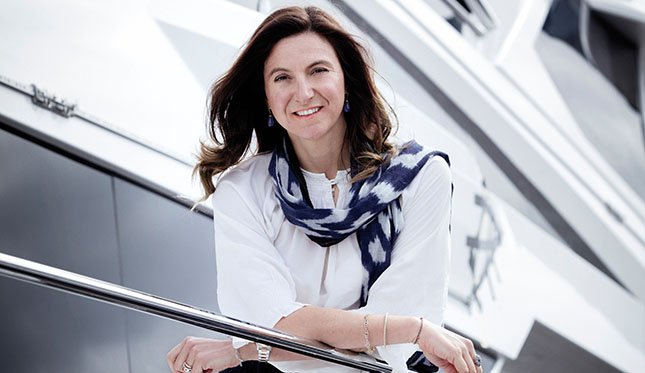Guiding her family’s yacht empire into its 50th year, Azimut Benetti group vice president Giovanna Vitelli, 44, constantly thinks about aluminum, steel, hydropropulsion engines and what she terms “a lifestyle of pleasurable boats.”
On the company’s board since her 20s, Vitelli, an attorney who previously worked in mergers and acquisitions at Milanese firm Bonelli Erede Pappalardo, now leads the privately-owned company her father Paolo founded in 1969 as a sail boat charter business. In the mid-1980s, Vitelli acquired Benetti, an 1873 company favored by Prince Ranieri and Aristotle Onassis.
“Azimut is design, glamour and lifestyle,” she says. “Benetti is timeless heritage and old money.”
Azimut Benetti is now the world’s largest luxury yacht manufacturer, exporting 98 percent of its production to 70 countries, and producing more than 45 models, ranging from 34-foot cruisers to 300-plus foot superyachts. Its holdings include marinas in Italy, Malta and Russia; a division dedicated to handling charters, brokerage, management and crews; a financing arm and a service company.

Vice president of the Italian yachting association, Vitelli is hoping to start a school to train Italian crews. She also oversees a competition in which young designers vie to win a three-month internship at Azimut headquarters, and recently added a new innovation for her clients: two styling lounges, run by five Tuscan architects, where clients can source everything for their yachts, from antiques and linens to tableware.
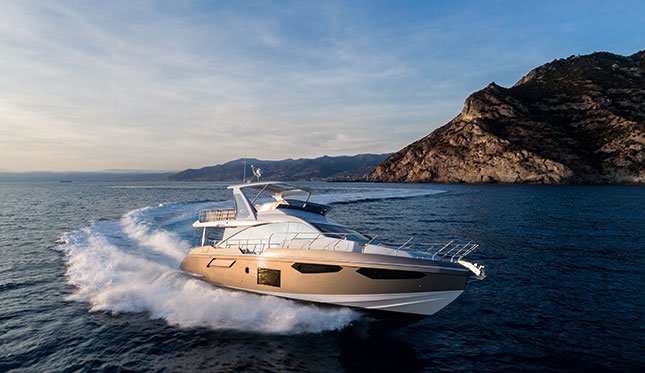
Fresh from a party at Manhattan’s Rainbow Room, one of five worldwide celebrating her company’s anniversary, Vitelli spoke from the buttery leather banquette of her Azimut 60, moored at Chelsea Piers.
Q: What’s new in yacht building?
A: For the first time, we’re constructing “gigayachts”—three yachts at 330 feet each. We’re the only Italians to build yachts over 300 feet. It’s a niche that’s been a monopoly of German and Dutch shipyards. This market delivers four to six of these boats in a year, and we’re now building three of them. One of the three will have the largest hybrid propulsion of a private yacht in the world. They’re due for delivery this summer, and it’s quite a show. You have a lot of contractors working on them, sometimes 400 people a day.
How have you managed to grow, even during financial crises?
The crisis of 2009 was an opportunity for us. We gained market share. A lot of competitors disappeared, and we reinvested in the company and had no financial debts. We were the only ones launching new products, and that helped a lot. Instead of selling to the Chinese or going public or putting our company in the hands of private equity that will try to take value out of the company, we stayed family owned.

The National Marine Manufacturers Association forecast 4 percent growth in the United States between 2007 and 2018. We grew 12 percent, for two reasons: very strong product and especially recently we’ve done strong innovation in interior design by bringing in designers from outside of the industry.
Why are outside designers important?
The yachting industry had a big boom in the 1980s and 1990s, and yachts were very opulent, with a lot of rich materials like glossy ebony and onyx. Interior designers in yachting had no fresh ideas, but habits are changing. I’d never sit inside a formal dining room on a boat anymore. Even on one of our most important yachts, the Benetti Oasis, we’ve decided to have the whole main deck with a lounging area and a big bar, and to put the dining area on top so you don’t have that formal area when you come in. The boat has a great swimming pool in the back and all sitting areas outside.
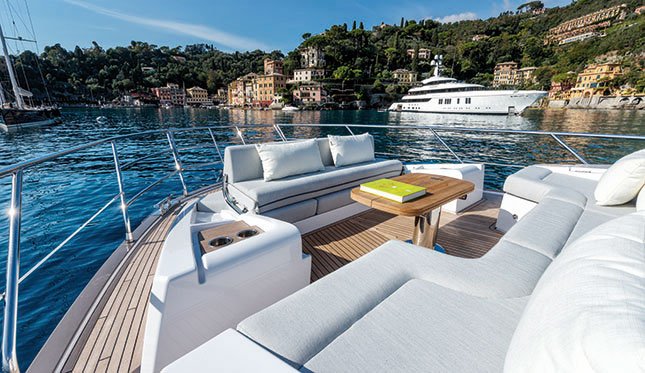
Who was the first well-known designer you worked with, and what did the collaboration accomplish?
I met Achille Salvagni through his work with the Ferragamos, and we’ve been working together for 10 years. He does six Azimut boats, from the 55 Fly to the Grande 35 Metri. His designs really helped with our sales. His 90-foot boat, the Azimut Grand 27 meter, launched in 2017. We’ve sold 26 so far. One of the challenges is where to put the air conditioning and the cables, so Salvagni curved and softened the ceiling to hide the parts you don’t want to see. A good designer takes functionality not as a limit but as an opportunity.
These boats cost $8 million to $10 million, so when customers come and don’t customize anything, it’s a big compliment. I always tell Achille he’s like my personal Armani, but better than Armani, because it’s much harder to design a $10 million boat than a bag.
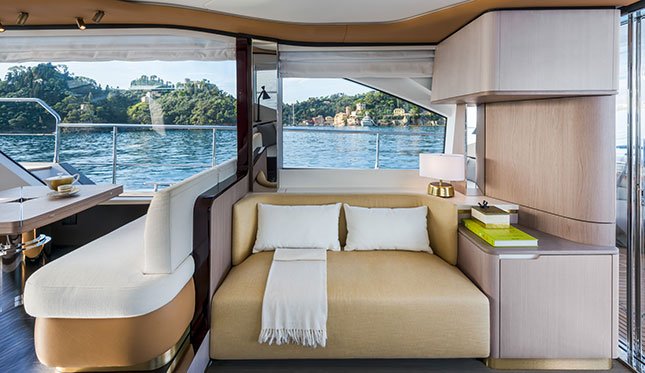
What’s the most surprising design request you’ve had for a custom ordered yacht?
We were the first ones to paint the hulls because of customers saying, “I want the hull to match my red Ferrari or yellow Lamborghini.”
We’ve added things like a wood-burning pizza oven and a flower refrigerator. We’ve done a copy of the Sistine Chapel fresco over the dining table on a Benetti. On a 300-foot yacht, we installed enormous staircases that recognize body temperature flanked by screens that change color or background theme based on the body temperature measurement.
Which designers are you excited about now?
We just hired New York-based Bonetti Kozerski to design a 125-foot Benetti Oasis. It’s their first boat and we’re launching it mid-next year. They’re very well-known for their work for Donna Karan’s residences, Tod’s stores, New York’s Public Hotel. They’re really open and interested not just in interpreting a new style but also in modifying the layout, which wouldn’t happen with a typical boat designer.
I’m also excited to work with Vincenzo de Cotiis, who’s designing a 25-meter Azimut Magellano for the beginning of 2020. We wanted someone who could bring us more to the art world instead of just design. De Cotiis plays a lot with fiberglass, treating it so that it stays raw and you can see the filament. The color goes from grey to green and combines with rich materials like bronze and a special green, intense marble. All of the ceilings will be treated that way.
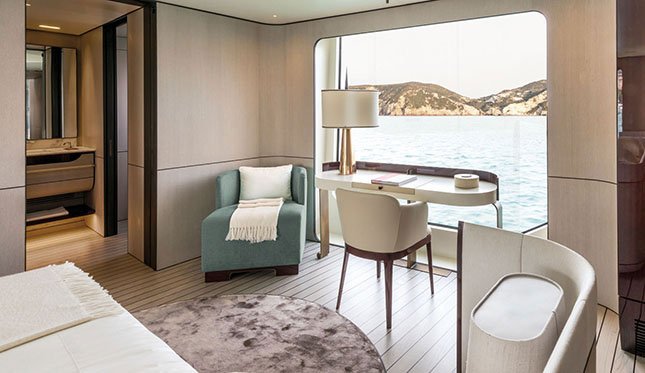
How do you balance working with very creative people but having to create an extremely engineered product?
We have a very sophisticated concept right now with Roberto Baciocchi, who’s been Miuccia Prada’s architect forever. He’s designing a 50-meter Benetti BNow Series for us, the first boat he’ll do in his life. You can tell there’s the fashion hand in this, for example with the reflected surfaces he’s designed for the ceiling. I need to find the right customer for this boat. It’s too big to build on spec. Roberto’s developed renderings of the salon and the master cabin, but he’s creative, so what he’s made is really in between a rendering and a watercolor. I said, “Roberto it’s fantastic, but we’re not in fashion. Before spending $40 million to $50 million on a boat, people need to see a rendering.” But he’s an artist. “I will not make a rendering,” he said. “You have to do it, Giovanna.”
What advice would you give readers for finding the right yacht?
A boat is clearly a luxury product. It’s an extra, so it really has to be a boat that you love. And service is very important. You need to make sure that whoever you buy the boat from maintains it properly. Otherwise it can take away the pleasure of boating, and it also makes a difference in resale value.
What are the challenges in owning a yacht?
Finding crews can be a challenge. We always think of the privacy area for the owner and guests and the crew, so in our boats, the areas have no overlap. This is very important. A crew has to be respectful of privacy.
The Americans and English especially have the best training schools for crews. It’s a pity because Italy is the leading country in production of mega yachts, but it’s difficult to find good Italian crews.
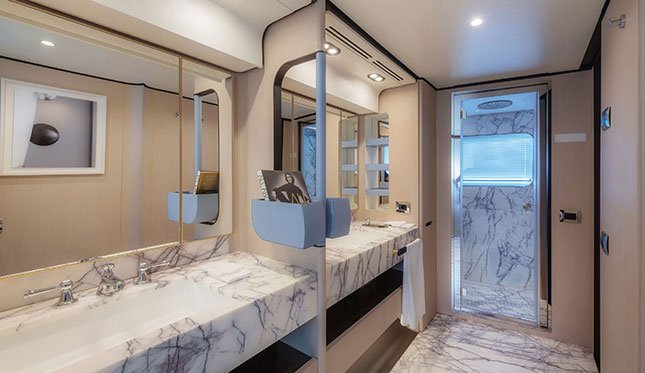
You recently moved to a new home in Turin. Did you use any design elements from your yachts?
We used the television system from the boats, where it pops up from a hidden cabinet. I hate to see a TV on the wall, so we have a big television like my husband wanted, but disguised. I called the boat supplier and said, “This time it’s for me.” It’s affordable, and then you have the wall back.
Also, marble. We have a lot on boats, but we have to be careful about weight. We have an Italian supplier who’s developed an engineering process to treat even delicate marble to make it thinner. My apartment is in a building from the 1700s, with original frescoes on the ceilings, so I couldn’t put too much weight in the new kitchen. I called the suppliers and they helped me make the marble lighter.

